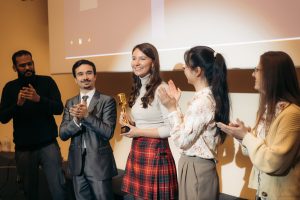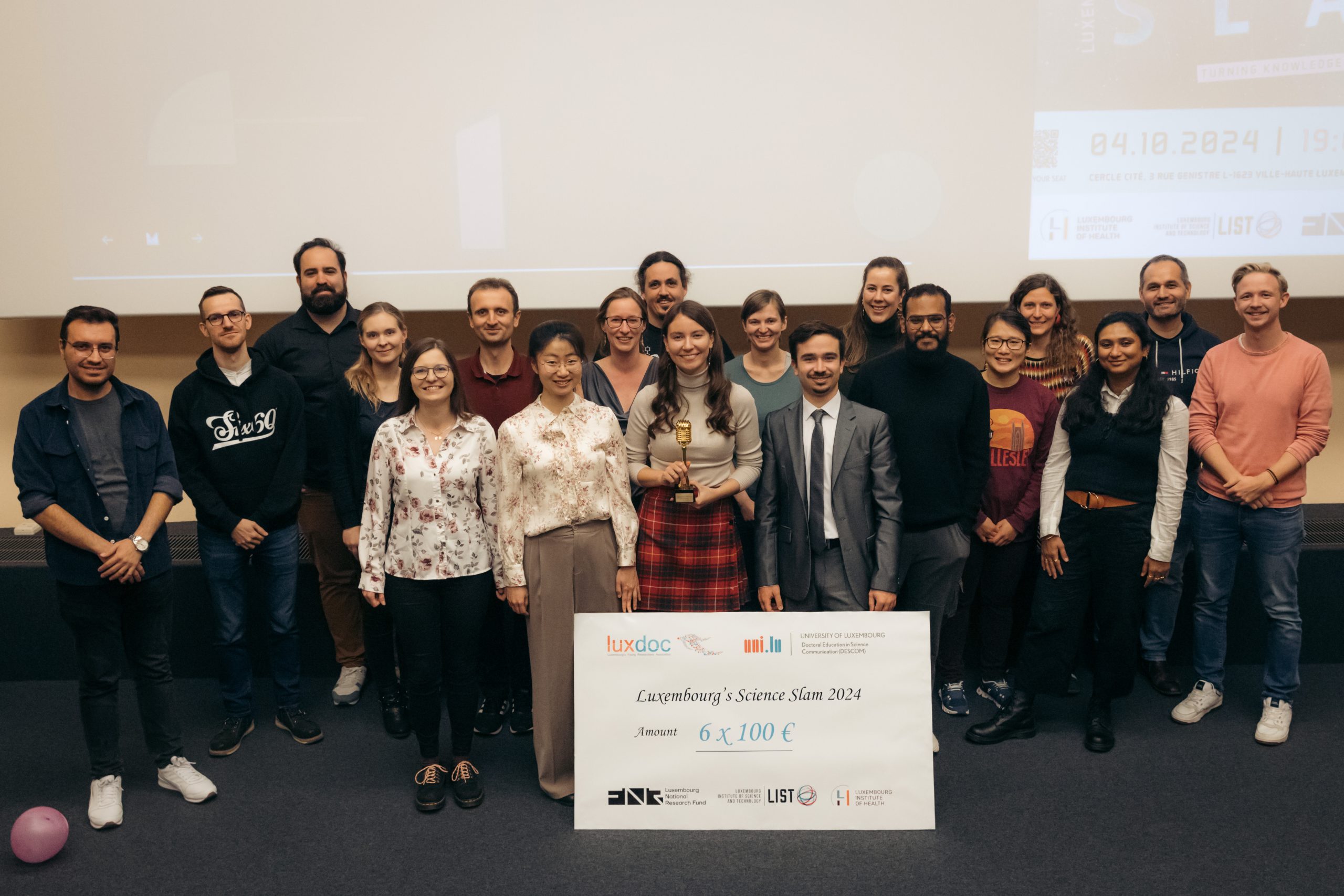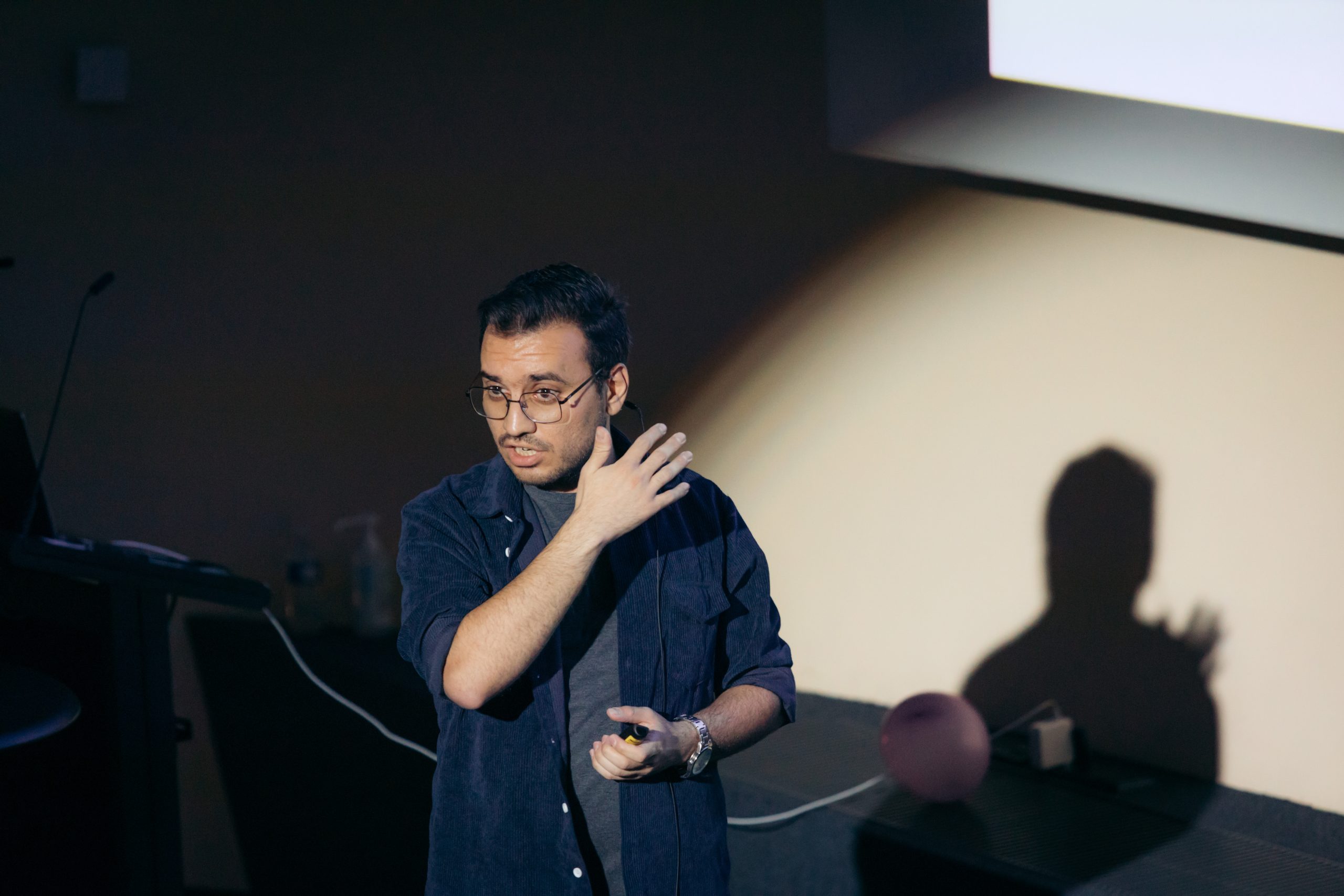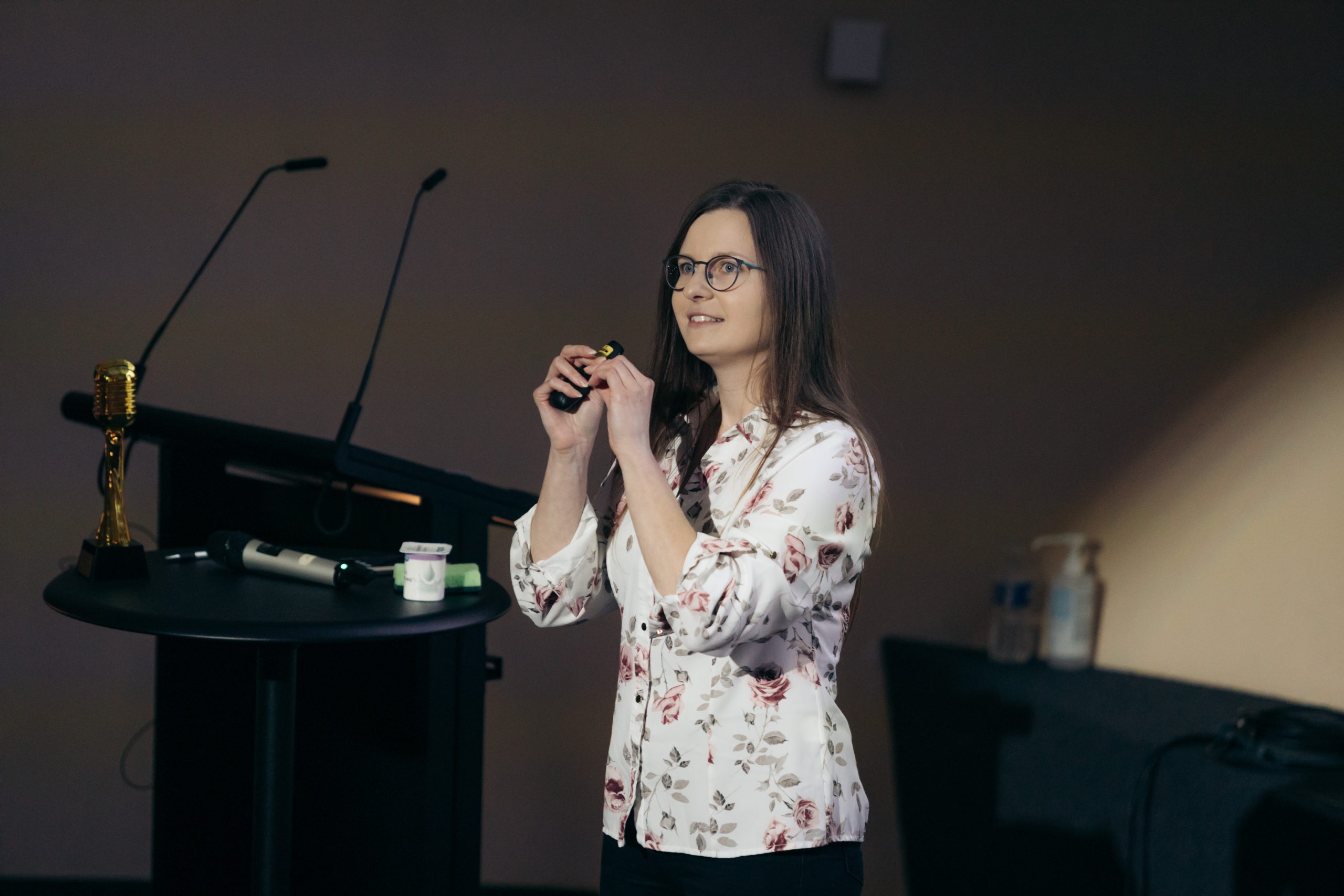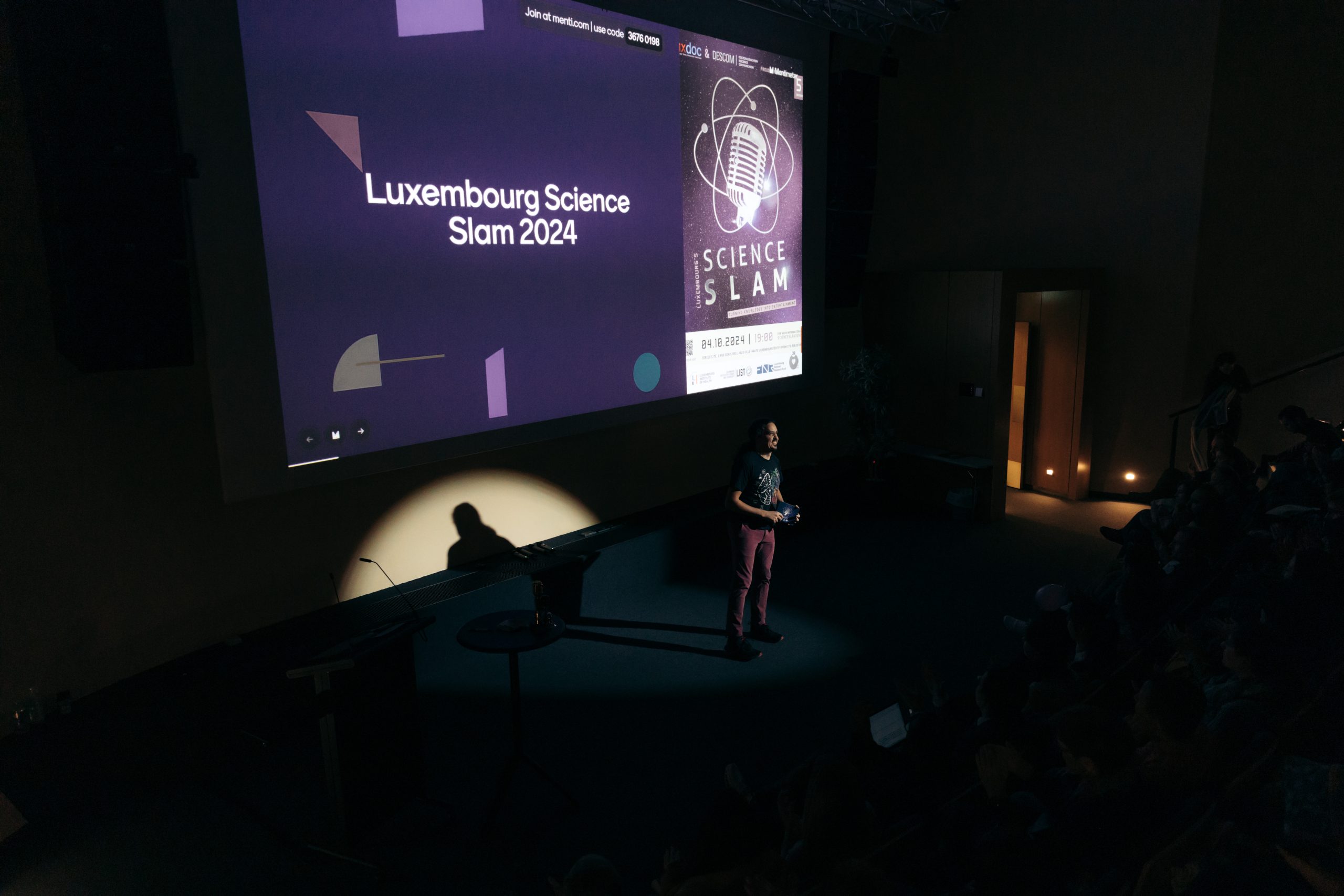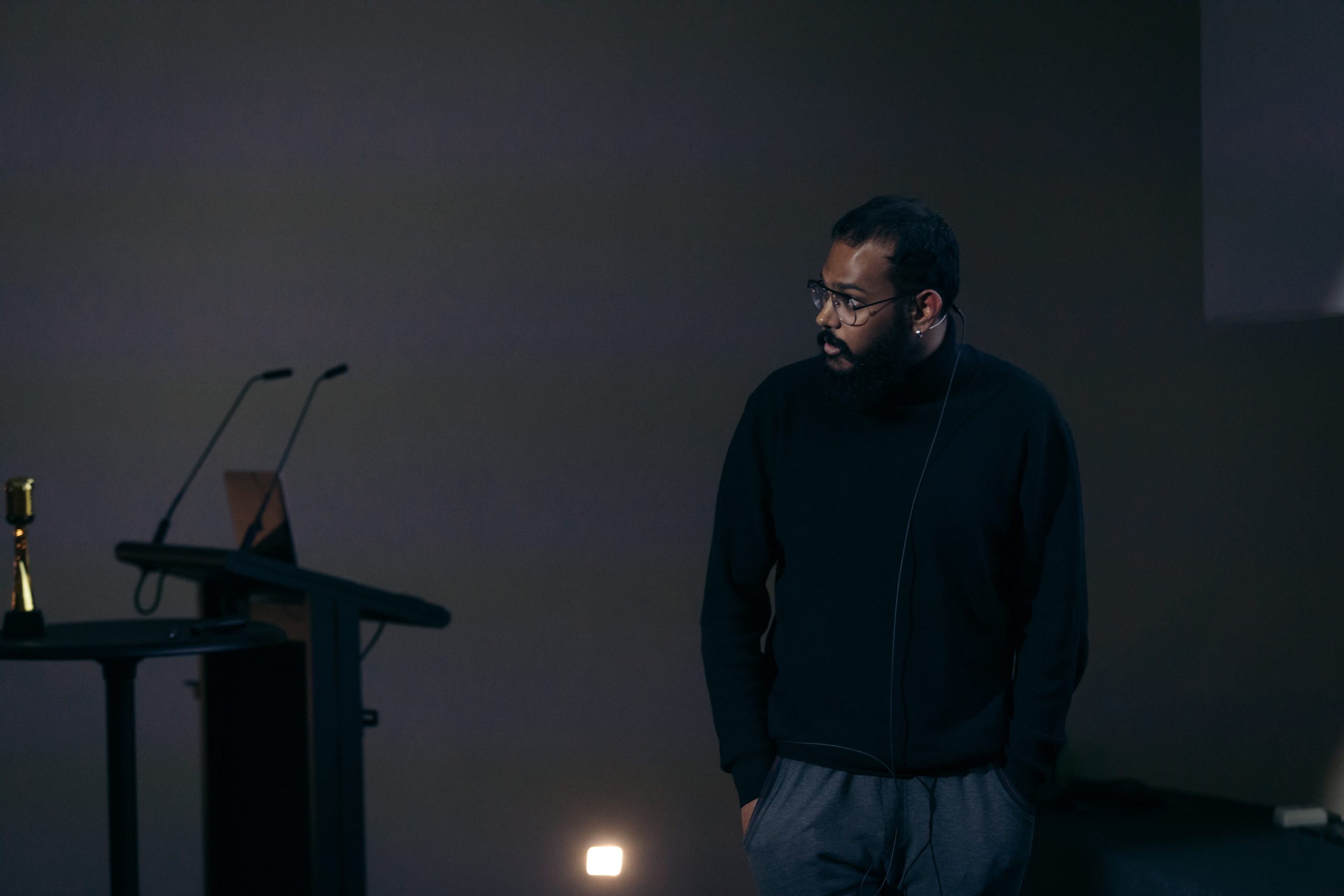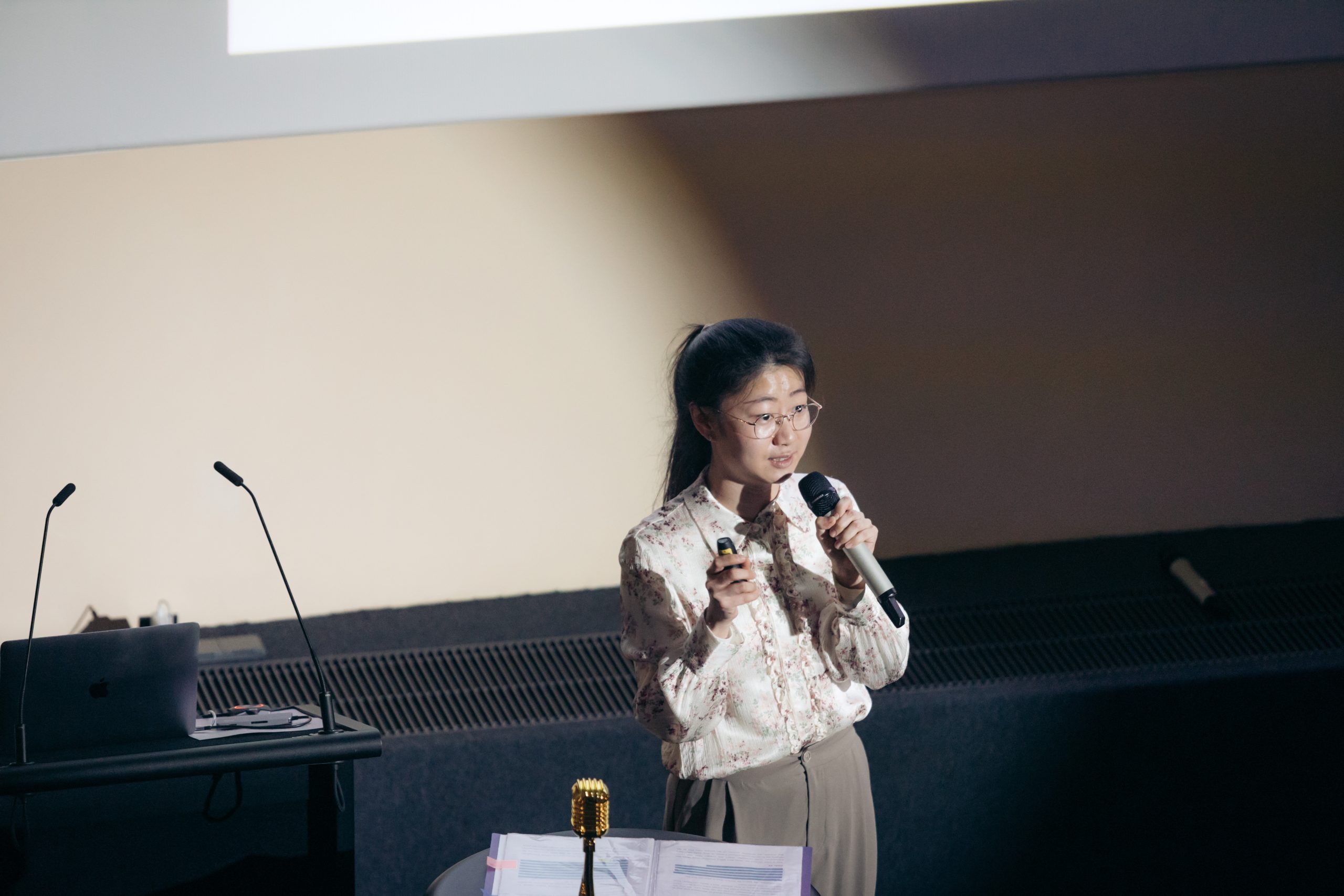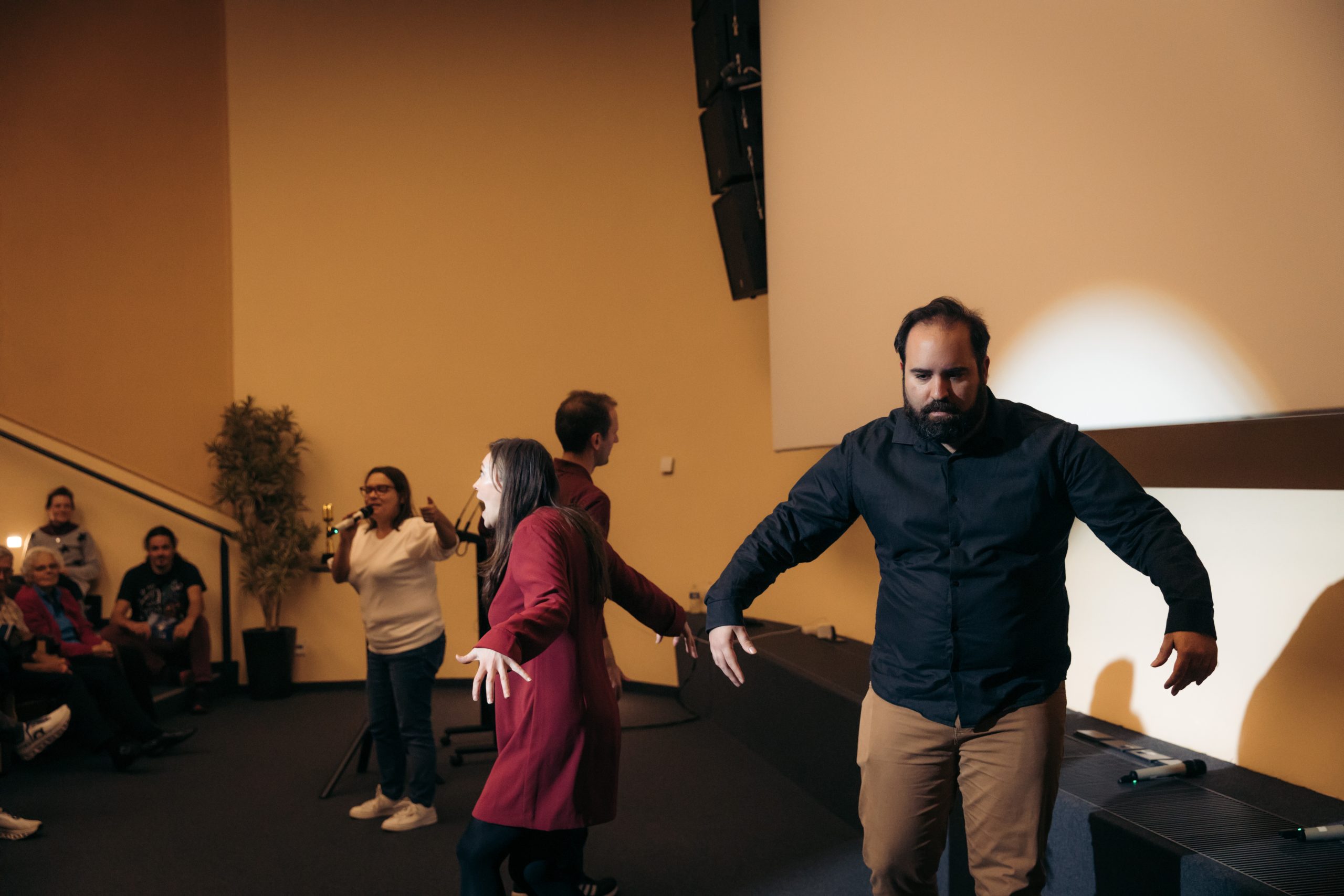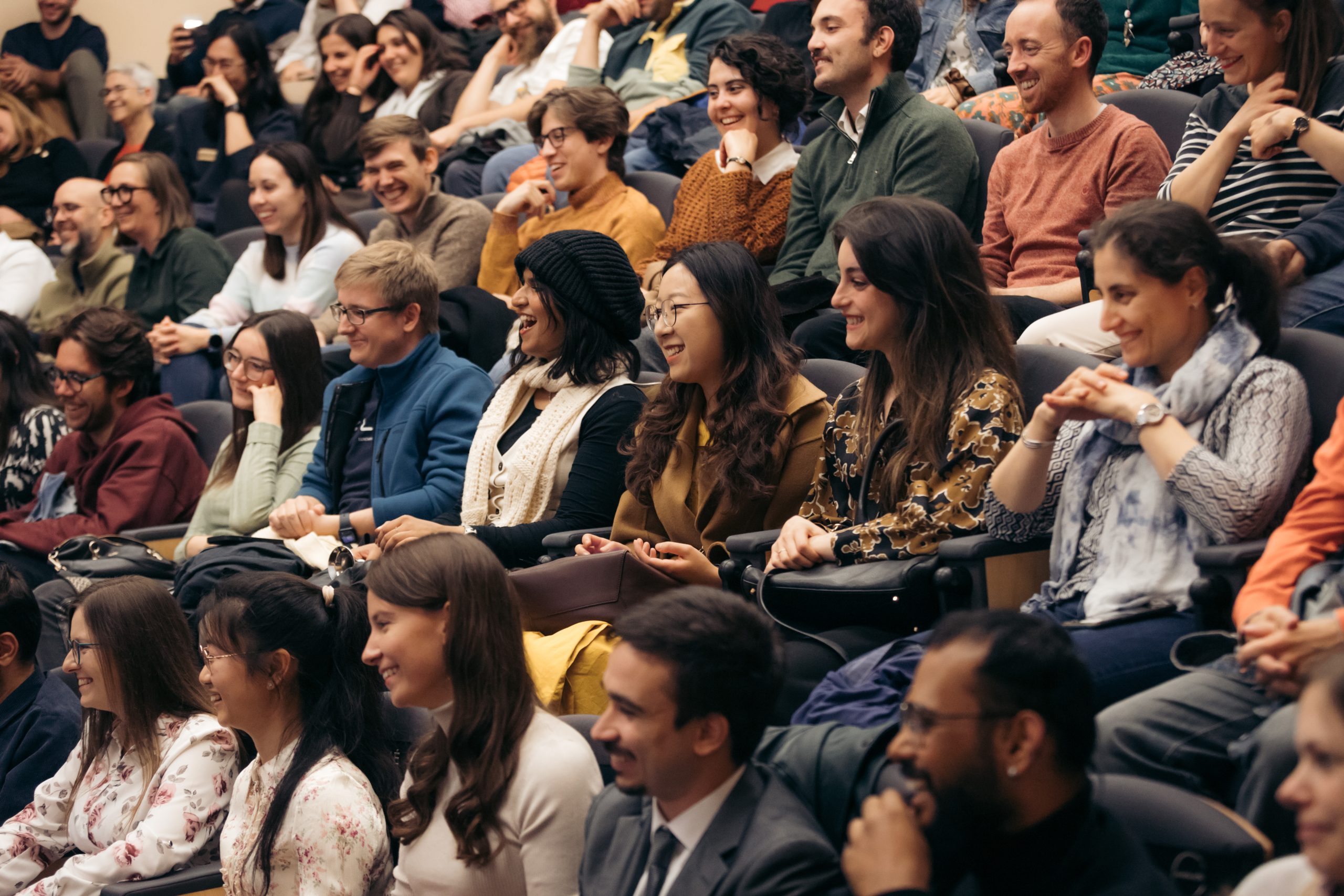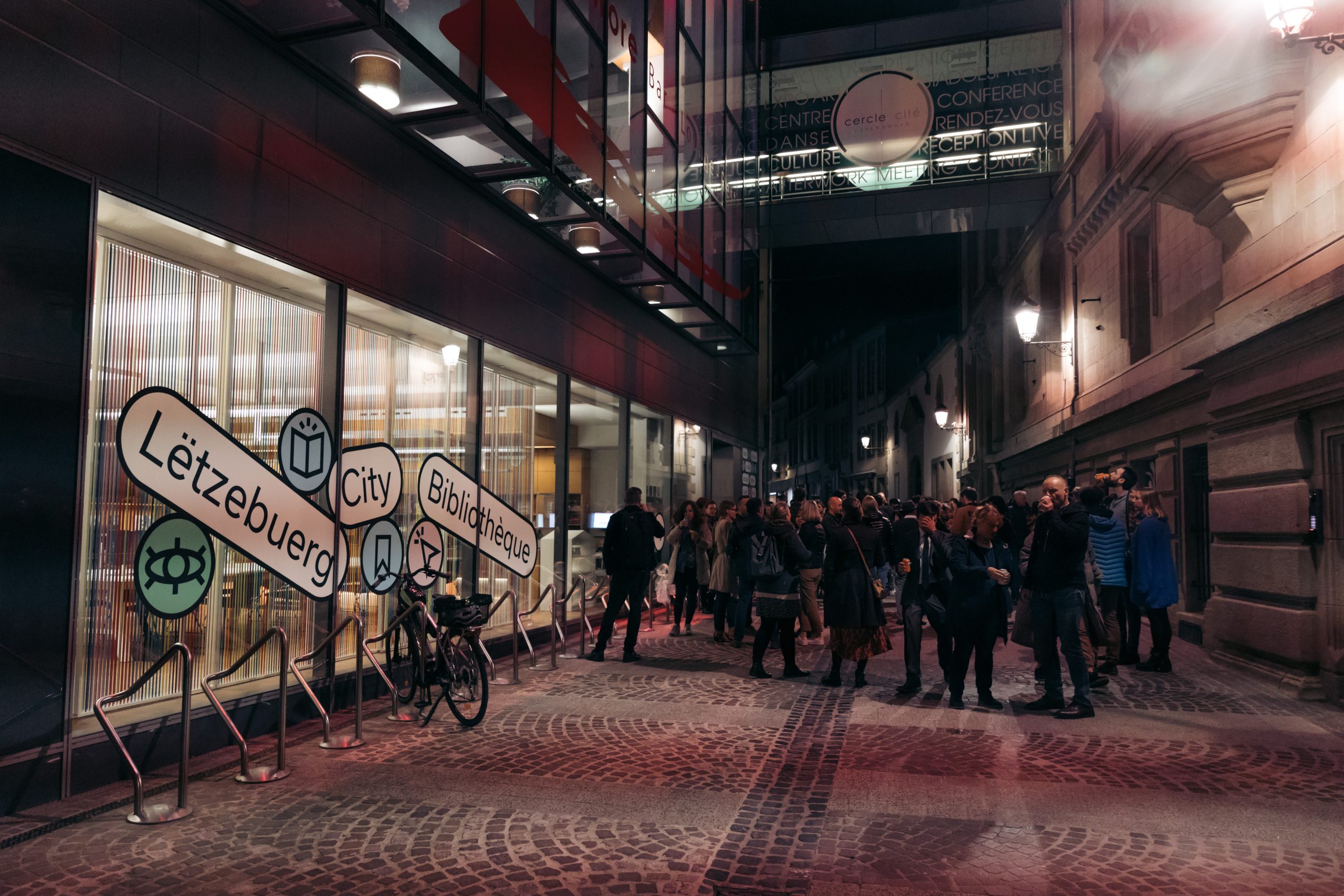Six scientists attracted a full house of more than 150 visitors during Luxembourg’s Science Slam 2024. They had 10 minutes to present their research in an understandable but also entertaining way in front of a sold-out Cercle Cité on October 4 covering topics from economics, law, engineering, humanities and biology.
The audience voted for aerospace engineer Citlali Bruce Rosete from the Interdisciplinary Centre for Security, Reliability and Trust (SnT) to become Luxembourg’s Science Slam Master 2024. She took home the golden trophy along with the space satellites she brought with her. In this interview she speaks about how she came up with one idea for her Slam in the supermarket. You can also watch a recording of her slam at the end.
What was your Slam about?
My slam was about my PhD research topic in space systems engineering, where I am analysing swarms of extremely small spacecraft. In my slam I focused on the miniaturisation of satellites down to gram-scale spacecraft, as well as some proposed mission concepts for these extremely small satellites.
How did you prepare for it?
Together with my fellow slammers, we had a coaching session with Manuel Maidorn, one of the organisers of the Science Slam, explaining how to organise and structure our slam and how to find the story and the key message we wanted to tell. After deciding on this key message, I started thinking about my story with analogies in my everyday life that I could compare to satellites. With my colleagues in the lab, we always joke about how our satellite (a PocketQube) is the size of a Rubik’s cube, so I thought: “why not actually bring and show a Rubik’s cube in my talk?” Another day, I was walking in the supermarket around the cheese section and thought: “that slice of cheese seems like a perfect model for a ChipSat!” An important part for me was showing how these small satellites can be useful to society and how they are helping us to better understand our world. I decided to share two or three missions that are currently active or that are being proposed to bring everyone closer to these satellites.
When did you come up with the idea of bringing real satellites to the slam?
I wanted to bring the satellite models from the beginning. Everyone has heard the word “satellite” at some point, but not everyone has had the opportunity to see one with their own eyes. In the Space Systems Engineering research group (SpaSys) at SnT, University of Luxembourg, we have developed a PocketQube, which is the size of a Rubik’s cube, which is very easy to carry around from place to place and show it. One of the advantages of these small satellites is that they are making space more accessible for universities, start-ups and even high schools. I wanted to take advantage of this opportunity to make space more accessible also for those who have never seen a satellite with their own eyes.
What do you mean with making space more accessible for start-ups and high schools?
There are satellites like CubeSats that have set a trend in space engineering and have allowed many institutions to access space by building their own CubeSat. However, developers of CubeSats must still deal with a manufacturing and launch cost in the order of hundreds of thousands of dollars or more and a development time of up to several years. This is not feasible for many universities, high schools and start-ups. That’s different with satellites like PocketQube that have a cost in the order of tens of thousands of dollars and take as low as one year to develop (or even less, once the team gains experience). This also means that it is possible to develop a PocketQube and give students the opportunity to go through all stages of design, development, and launch of a space mission within a one-year course. In fact, many of the PocketQubes in orbit have been developed in universities, and some even in high schools, which shows the great educational value that PocketQubes have!
Why did you participate in the Science Slam?
During my PhD, I have participated in several science outreach events to involve children and teenagers in science. Outreach activities are always a lot of fun to prepare and I love the creativity that goes behind them! When I heard about the Science Slam, it sounded like a challenging and exciting opportunity to share my work in a format that I had not tried before.
How did you like the event?
I had a lot of fun! It was very nice interacting with the audience and feeling the positivity in the room. I also really enjoyed my fellow slammers’ slams, each in a very different field. It was an interesting way of learning about the research that is done in Luxembourg and the many approaches that you can take to explain your research to others.
What did you learn?
For me, the science slam was an exciting challenge because I had never given a presentation of this kind before. I learned the most when having to think of how to explain my topic to an audience that is not in my field, on how to make it entertaining and fun. The creativity required to create my slam and make it engaging allowed me to look at my own research topic from a different perspective.
Would you recommend participating as a slammer?
Absolutely! I think the Science Slam is such a good way to learn about science communication and a first hand experience on outreach presentations. Making your research topic understandable and reachable for everyone is a great learning experience that makes you think of your research in a different way, and maybe even understand it better yourself. Communicating science is so important to excite new generations and to get them involved in science, and the science slam is the perfect way to gain experience.
Why is science communication important to you?
For me, a very important part of science and research is being able to share it with everyone. Science is all about understanding our world a bit better, so as a researcher I have the responsibility of sharing my knowledge with others and it is very important to communicate this knowledge in an understandable and engaging manner.
Where did you put your trophy?
I put my trophy on my bookshelf on top of my desk at home, next to my Totoro plushie! I can look at it while working to keep me motivated.
Photos: © LuxDoc asbl / Anne Lommel
The Science Slam is a yearly event organized by the doctoral student association LuxDoc asbl in collaboration with DESCOM, a science communication project from the University of Luxembourg. You can watch the recordings of all slammers (2021-2024) on YouTube. The event is supported by the Luxembourg National Research Fund (FNR), the Luxembourg Institute of Health (LIH), the LIST as well as the University of Luxembourg.
SAVE THE DATE: The next and 10th edition of Luxembourg’s Science Slam will take place on 26th September 2025. More information will follow soon. Stay tuned via scienceslam.uni.lu or by following the LuxDoc social media channels (Facebook, Instagram, X, LinkedIn).
If you would like to become a slammer as well, you send an e-mail to scienceslam@uni.lu briefly describing your background, your affiliation and the topic you have in mind. We will contact you once we have more details on the 2025 edition.
